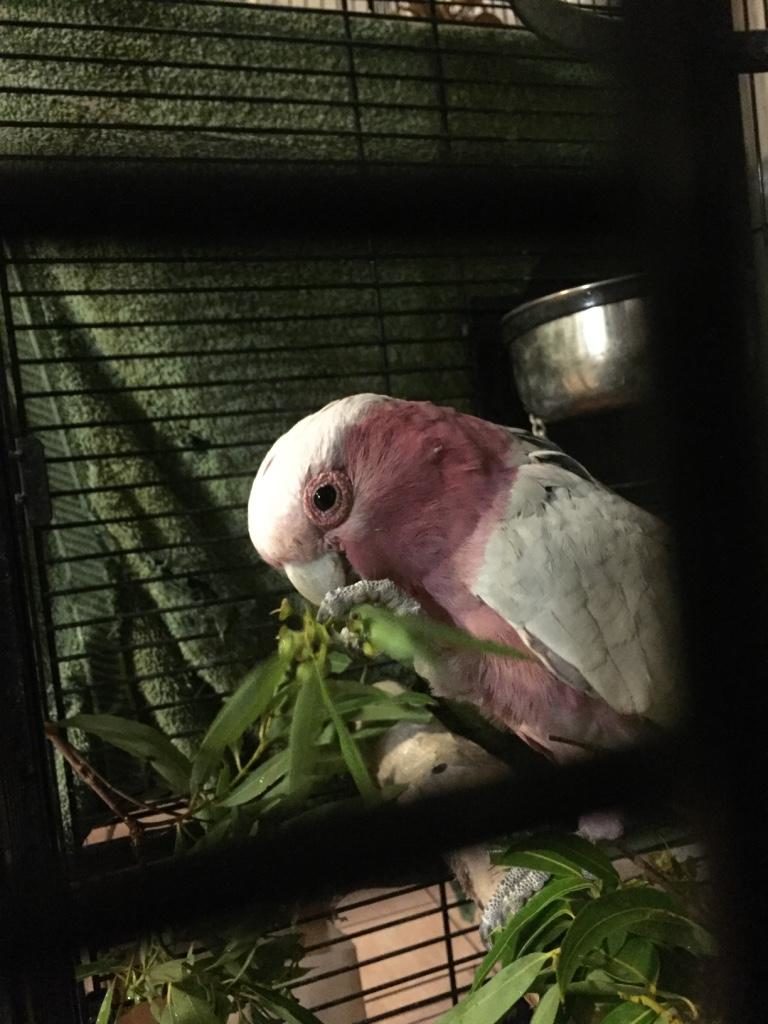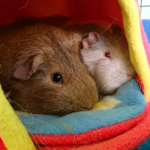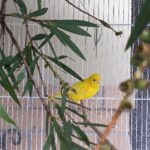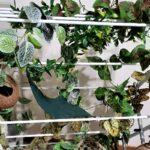We thought we would start the month by talking about birds! Anyone who owns a parrot would be pretty aware they often like to CHEW! This means we have to be very careful about what we include in their environment to prevent some health issues! The two most common health issues associated with chewing bedding/cage bars are fibre obstruction associated with chewing on rope/happy huts, and heavy metal poisoning associated with chewing on rust. These health issues are seen very regularly in the clinic and are easily preventable!
Poultry can also run into some dramas associated with bedding material. Excessively dusty bedding, or bedding that grows mould can result in significant respiratory irritation and disease. Aromatic bedding materials can also be irritating particularly to chickens that have previously had some level of respiratory disease.

Here Toby the Galah is chewing on some natural browse – this is a wonderful method of enrichment for captive birds as it allows them to mimic wild behaviours. The towel placed adjacent to the cage in this photograph is a potential issue – if Toby chews on the fibres of this towel he may swallow them and this could result in a foreign body.
Parrots
As stated above, parrots love to CHEW! It is a natural behaviour that they display in the wild, and they often seek out items to chew in a captive situation. This is why it is so important to provide ample safe chewing opportunities – such as wooden perches, paper, cardboard, balsa wood and leather.
Many birds will chew at rope or fibres; most will spit out the fragments, but some will swallow them. These can build up in the bird’s crop and stomach causing serious problems requiring surgery. Fibres that have been removed from birds include cotton, plastic rope and human hair. Unfortunately, sisal and other natural fibres have also caused problems. Particular problems are seen with cockatiels and lorikeets, but any species can be affected. While some owners will continue to place these items in the enclosure, we recommend finding alternative sources of environmental enrichment. Prevention is much better than cure!
In addition to ingestion, fibres can wrap around body parts, especially the legs and toes, causing constriction. Left untended for long enough, a thread can tourniquet a leg sufficiently to cut off all circulation. Monitor your toys for threads that could cause entrapment, and be vigilant for sore or swollen toes, feet or legs.
Apart from fibres, birds can also ingest other foreign items such as plastic rings, balls, earrings and metal chain. Ensure that any component that could become separated from the toy is either too big to fit into your bird’s mouth, or is completely biodegradable. Be aware that a toy that may be safe for a cockatiel may NOT be safe for a macaw or cockatoo!
Metal/Rusty toys
Many toys have metal parts. Some metals, such as lead, zinc and copper, can be extremely poisonous for birds. However, stainless steel is safe, so toys made of this are suitable. If nickel plated, aluminium or chrome parts are used, be certain to remove the item as soon as there is any discolouration, rust or flaking.
Items to avoid include:
- mirror backs, leadlight, stained glass windows, solder, pewter, electrical wire, glazed ceramics, foil from over champagne and wine corks
- Weights – curtain weights, fishing and diving equipment, self-righting toys
- Lead shotgun or rifle pellets, lead based paints (some lead free paints have leaded drying agents), varnishes, lacquers
- Linoleum & roofing felt, electricians cable clips, batteries (household), light bulb bases, plaster and putty
- Costume jewellery
- Car exhaust fumes, seeds for planting (coated with lead arsenate)
- Bells – check for lead clappers
- Galvanized wire, nails, clips, padlocks and feeding bowls especially when new (brushing with a wire brush and vinegar reduces, but doesn’t eliminate the risk)
- “White rust” on older galvanized products, shiny ‘silver’ coating on cage bars, wires used as hangers for chew-sticks
- Metal monopoly game pieces or similar and some coins
Additional bedding
Chickens
Earlier this year we had a few reports of people using lemongrass as a substrate in their chicken nests, instead of straw or sawdust. People have been using lemongrass as it is less dusty. Dusty bedding can certainly result in respiratory irritation to our poultry, which can predispose to infection, however we have also had a number of cases of chickens with respiratory irritation we suspect is due to lemongrass. It seems that only chickens that have particularly sensitive airways (e.g. previous respiratory trauma/infection) have been affected, but since we have seen a number of cases we wanted to let people know! We would not suggest using such an aromatic substance in your chicken coop, instead we have the following recommendations:
- Ensure the enclosure has a well-ventilated and draft free nesting area.
- Loose straw can be used for bedding in the nesting boxes to provide a warm and padded area.
- Ensure the straw remains dry and clean to prevent mould from growing. Provide at least one nesting area for every three hens.
- Cleanliness is important and the nesting areas should be attended to often. Remove old bedding, scrub the boxes and then furnish with new, clean bedding at least once a week.
Providing perches will give chickens the opportunity to roost and feel safe from predators. Install the perches so that they are approximately 40-60cm from the ground. Thick, natural tree branches with a diameter of 6cm is ideal, but wooden dowel poles of a similar size would be suitable as well. Mount perches securely and at different heights to accommodate all chickens in the flock.
If you have any questions feel free to call the clinic on 07 3217 3533



